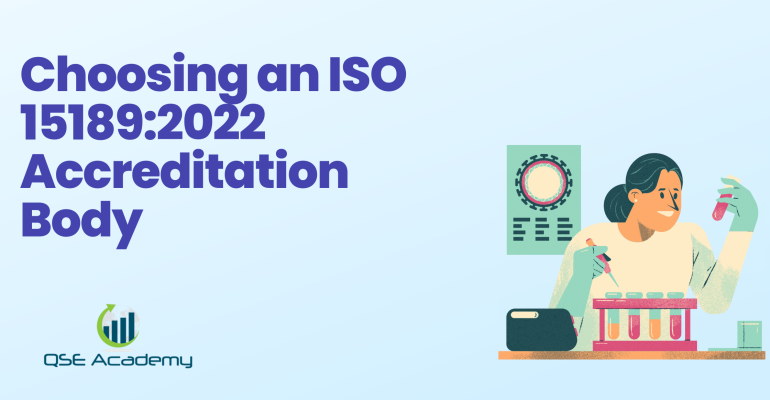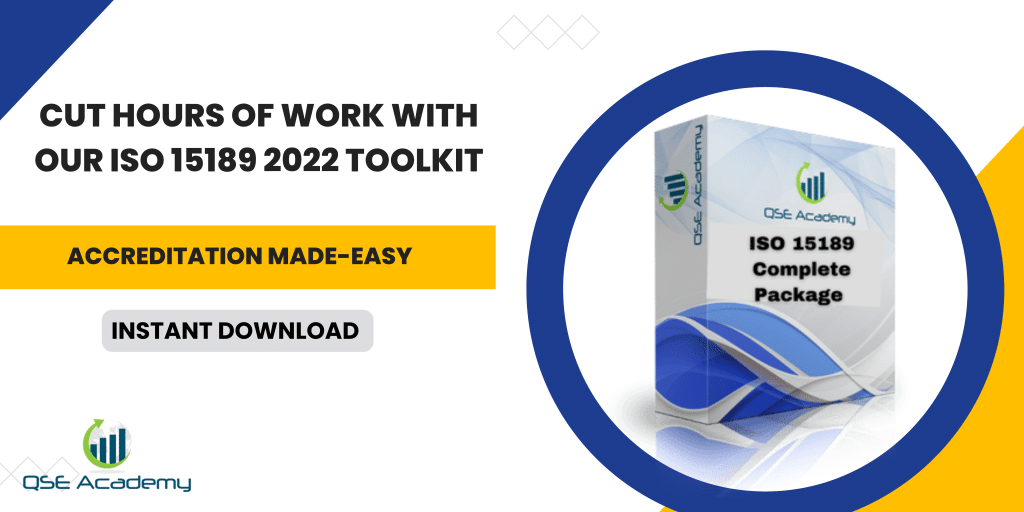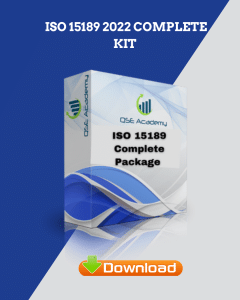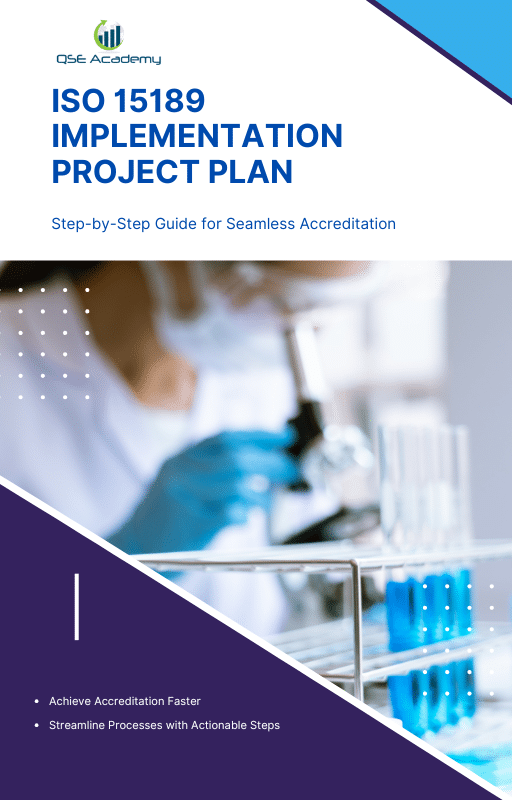Choosing an ISO 15189:2022 Accreditation Body
Last Updated on October 22, 2025 by Hafsa J.
Understanding What an Accreditation Body Does
Before you choose one, it helps to understand what an accreditation body (AB) actually is. Think of it as the referee of your laboratory’s competence — the organization that verifies your lab meets the technical and management requirements of ISO 15189:2022.
Unlike certification bodies, which issue ISO 9001 certificates for management systems, accreditation bodies assess your technical competence. They don’t just check paperwork — they evaluate your methods, equipment, staff skills, and quality control processes to ensure your lab can produce valid, reliable results.
Here’s the key:
Accreditation bodies are usually national authorities, authorized to grant recognition under an international network called the ILAC Mutual Recognition Arrangement (MRA). Being under ILAC means your accreditation is globally accepted — so your test results are trusted across borders.
Pro Tip: Always verify if your chosen body is an ILAC MRA signatory. You can check the ILAC website or regional bodies like APLAC or EA. If it’s not listed, your accreditation may not carry international weight.
Common pitfall: Many labs mistake ISO 15189 accreditation for ISO 9001 certification. They sound similar, but they’re completely different. ISO 9001 looks at management consistency; ISO 15189 dives deep into technical accuracy and competence.
Now that you know what accreditation bodies do, let’s talk about how to evaluate them — because choosing the right one takes more than just picking the nearest option.
Key Criteria When Selecting an ISO 15189:2022 Accreditation Body
Not all accreditation bodies operate the same way — and picking the right one can save your lab months of frustration. The goal is to find a partner that’s credible, recognized, and efficient, not just “cheap and local.”
Here’s what to look for before signing anything:
-
Recognition and credibility.
Always check if the body is internationally recognized through the ILAC Mutual Recognition Arrangement (MRA). If it’s not, your accreditation might not be accepted outside your country — which can limit contracts or collaborations. -
Regional authorization.
Make sure the body is legally allowed to operate in your region. Some labs choose a foreign AB without realizing it can’t issue valid certificates locally. -
Technical expertise.
Accreditation is only as good as the assessors behind it. Ask if they have auditors with medical or clinical experience, not just general quality backgrounds. -
Transparency in costs.
Accreditation isn’t cheap — and hidden fees are common. Always request a full breakdown: application, man-day, assessor travel, and surveillance costs. -
Turnaround time.
Some bodies are fully booked for months. Ask about lead time for application review and on-site assessments before you commit.
Pro Tip: A responsive accreditation body is a good sign of how they’ll treat you after you’re accredited. If they take weeks to reply to a simple email now, expect delays later.
Common pitfall: Choosing solely based on the lowest fee. I’ve seen labs save a few thousand dollars upfront only to lose months later in administrative delays or reassessments.
Once you understand what to evaluate, it’s easier to compare your options — so let’s look at how the major accreditation bodies differ in practice.
Questions to Ask Before Signing with an Accreditation Body
Before you commit to an accreditation body, ask the right questions. I’ve seen labs skip this step and end up dealing with long delays, unclear costs, or assessors who don’t understand their type of testing. A short conversation upfront can save months of frustration later.
Here’s what you should ask:
-
Are you an ILAC MRA signatory?
This determines whether your accreditation will be recognized internationally. If the answer is no, that’s a major red flag. -
What’s your average lead time from application to assessment?
Some bodies have backlogs that stretch to six months. You need to know this before setting internal deadlines. -
How many assessors specialize in our discipline?
A hematology or microbiology lab needs assessors with clinical experience — not someone who usually audits industrial testing. -
What’s your full fee structure?
Ask for a breakdown: application fees, man-days, assessor travel, and annual surveillance costs. Transparency here tells you a lot about how the body operates. -
Do you support remote or hybrid assessments?
Many ABs now offer partial remote reviews. It can save time and money if planned early.
Pro Tip: Ask for a sample audit checklist or pre-assessment guide. Accreditation bodies that share templates upfront are usually more organized and transparent.
Once you’ve got answers to those questions, you’ll have a good sense of whether an accreditation body is a true partner or just another bureaucracy. Next, let’s look at what happens when you’re ready to apply and start communicating officially.
How to Apply and Establish Communication with the Accreditation Body
Once you’ve chosen your accreditation body, it’s time to make things official. This step sets the tone for your entire accreditation journey — and clear communication from day one can make the process far smoother.
Here’s how it usually goes:
-
Prepare your documentation.
Have your scope of testing, Quality Manual, and key procedures ready. Accreditation bodies want to see that you’ve started implementing ISO 15189:2022 before they review you. -
Submit your initial inquiry.
Most ABs have an online form or downloadable application. This includes details like your lab type, number of staff, and test categories. -
Receive a quotation and tentative timeline.
They’ll send an estimate of cost, man-days, and a proposed schedule for pre-assessment or full assessment. -
Submit the formal application.
Once you accept the quotation, you’ll send supporting documents (like your Quality Manual and scope) for review. -
Coordinate scheduling and next steps.
The AB assigns assessors and confirms the audit window — usually within a few weeks, depending on availability.
Pro Tip: Assign one main contact person in your lab — ideally your Quality Manager — to handle all communication with the accreditation body. Having a single point of contact prevents miscommunication and keeps updates organized.
Common pitfall: Applying to multiple accreditation bodies at the same time to “compare options.” It sounds strategic, but it can create confusion and even administrative conflicts. Finalize your choice first, then move forward with one.
Now that you know how to approach and work with your accreditation body, let’s look at the most common mistakes labs make when choosing one — and how to avoid them.
Common Mistakes When Choosing an Accreditation Body
Even the most well-prepared labs can stumble here. Choosing the wrong accreditation body can lead to wasted time, extra costs, and even certificates that aren’t recognized where you need them.
Here are the biggest mistakes I’ve seen — and how to avoid them:
-
Ignoring international recognition.
Some labs go with local or private bodies that aren’t ILAC MRA signatories. The result? Their accreditation isn’t valid outside their country — or even rejected by clients who require global recognition. -
Focusing only on price.
It’s tempting to pick the cheapest option, but accreditation is about credibility, not bargains. A lower fee often means slower service or assessors with less technical depth. -
Not checking assessor expertise.
A general auditor can’t properly assess a specialized medical or molecular lab. Always ask whether assessors have experience in your specific field of testing. -
Underestimating lead times.
Accreditation bodies can be booked months in advance. If you don’t confirm timelines early, your entire project schedule can slip. -
Skipping the background check.
Always verify the body’s legitimacy on the ILAC website or your national accreditation registry. Don’t rely solely on what their website claims.
Real-world example:
A regional diagnostics lab once chose a cheaper, non-ILAC local body for faster approval. Six months later, an international client refused their reports because the accreditation wasn’t globally recognized. They had to restart under a new body — doubling their cost and effort.
Pro Tip: Before signing any agreement, ask the accreditation body to provide documentation showing their ILAC MRA status and scope of authority. Legitimate bodies will always provide it without hesitation.
Now that we’ve cleared up the common pitfalls, let’s answer some of the most frequent questions labs ask when selecting their ISO 15189 accreditation body.
FAQs – Choosing an ISO 15189:2022 Accreditation Body
1. Can I change accreditation bodies later?
Yes, but it’s rarely simple. Switching accreditation bodies means going through a new application, document review, and often another full assessment. Most labs only make the change if their original AB is unresponsive, unrecognized internationally, or too costly in the long run.
2. Does the accreditation body affect how long or expensive the process is?
Absolutely. Each AB has its own man-day calculation, assessor fees, and scheduling pace. For example, some include assessor travel in the quoted price, while others charge it separately. Knowing these details early helps you avoid budget surprises.
3. Are private or independent accreditation bodies valid?
Only if they are official ILAC MRA signatories. Private companies can claim to offer accreditation, but if they’re not listed under ILAC or a recognized regional arrangement (like APLAC or EA), their certificate has no international credibility.
4. What’s the best way to confirm if an accreditation body is recognized?
Visit the ILAC website (www.ilac.org) and check the list of signatories. You can also verify through your country’s national accreditation council. Never rely solely on claims made on the organization’s marketing materials.
With those questions out of the way, let’s wrap up with the key takeaway — how choosing wisely today can save you years of effort down the road.
Choose Wisely, Build Credibility
Your choice of accreditation body isn’t just a formality — it’s a strategic decision that defines your lab’s credibility, recognition, and long-term success.
The best accreditation body for your lab is one that’s internationally recognized, transparent about costs, responsive to communication, and experienced in your field of testing. Once you find that fit, the entire ISO 15189:2022 process becomes smoother and more predictable.
From my experience guiding labs through different accreditation systems — SANAS, UKAS, JAS-ANZ, and CAP — the pattern is clear: the right partnership saves you time, builds trust, and positions your lab for growth.
If you’re still comparing options, use our ISO 15189 Accreditation Body Comparison Checklist to evaluate recognition, timelines, and assessor expertise side by side. It’ll help you make a confident, informed choice — one that strengthens your lab’s reputation and simplifies every audit to come.
Because when you choose your accreditation body wisely, you’re not just checking a requirement — you’re investing in your laboratory’s global credibility.
Whether it’s ISO 9001, ISO 22000, or the cosmetics-focused ISO 22716, I’ve spent my career I’m not here to call myself an expert—I prefer “enthusiast” because I truly love what I do. When I’m not writing about standards, you’ll probably find me playing Piano 🎹, connecting with people, or diving into my next big project💫. I’m an engineer specialized in the food and agricultural industry
make ISO standards less intimidating and more approachable for everyone.
turning complex jargon into clear, actionable steps that businesses can actually use.
There’s something incredibly rewarding about helping people navigate food safety and quality management systems
in a way that feels simple, practical, and even enjoyable.
I have a Master’s in QHSE management and over 12 years of experience as a Quality Manager
I’ve helped more than 15 companies implement ISO 9001, ISO 22000, ISO 22716, GMP, and other standards
My clients include food producers, cosmetics manufacturers, laboratories, and service companies
I believe quality systems should be simple, useful, and efficient.













